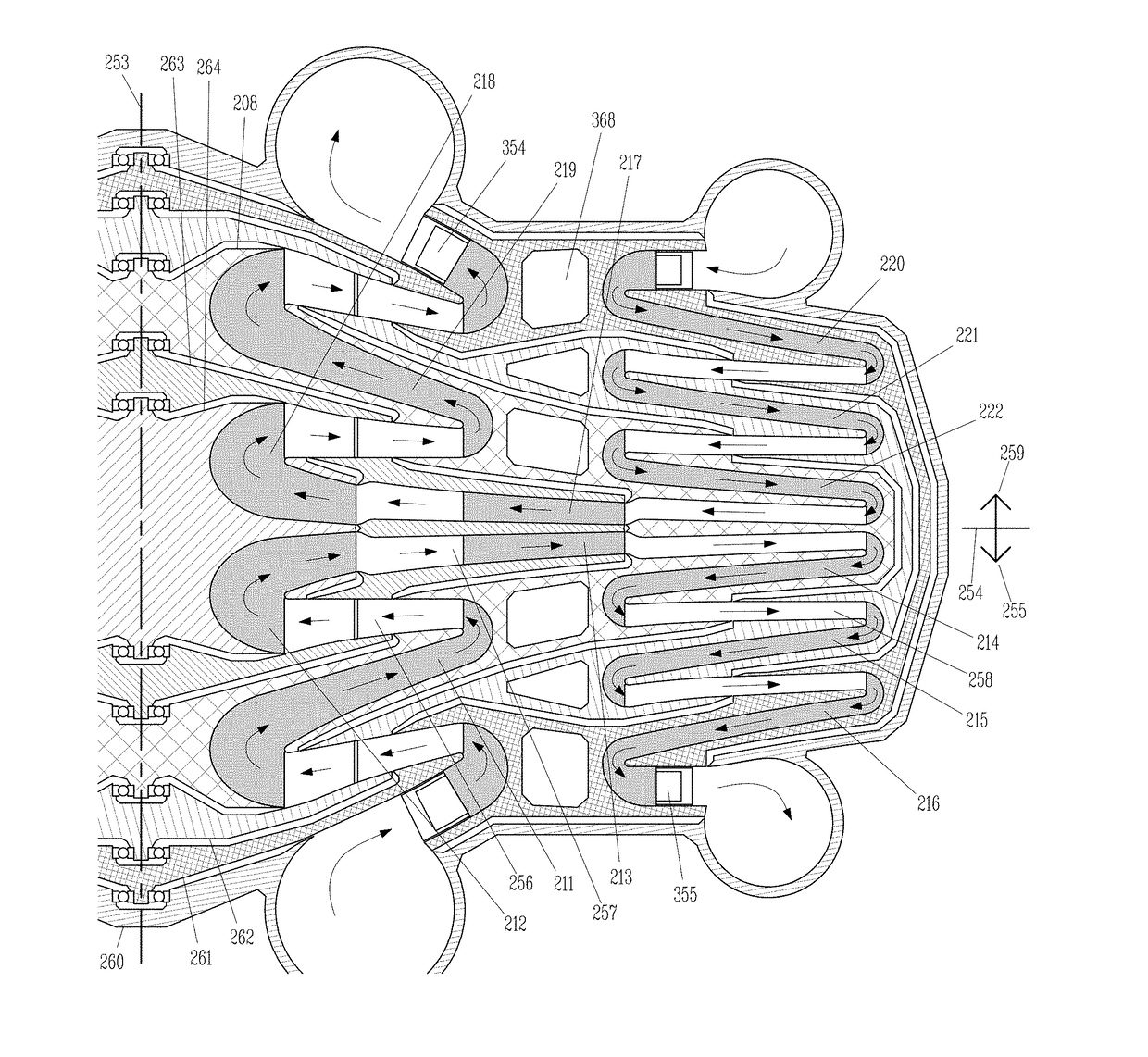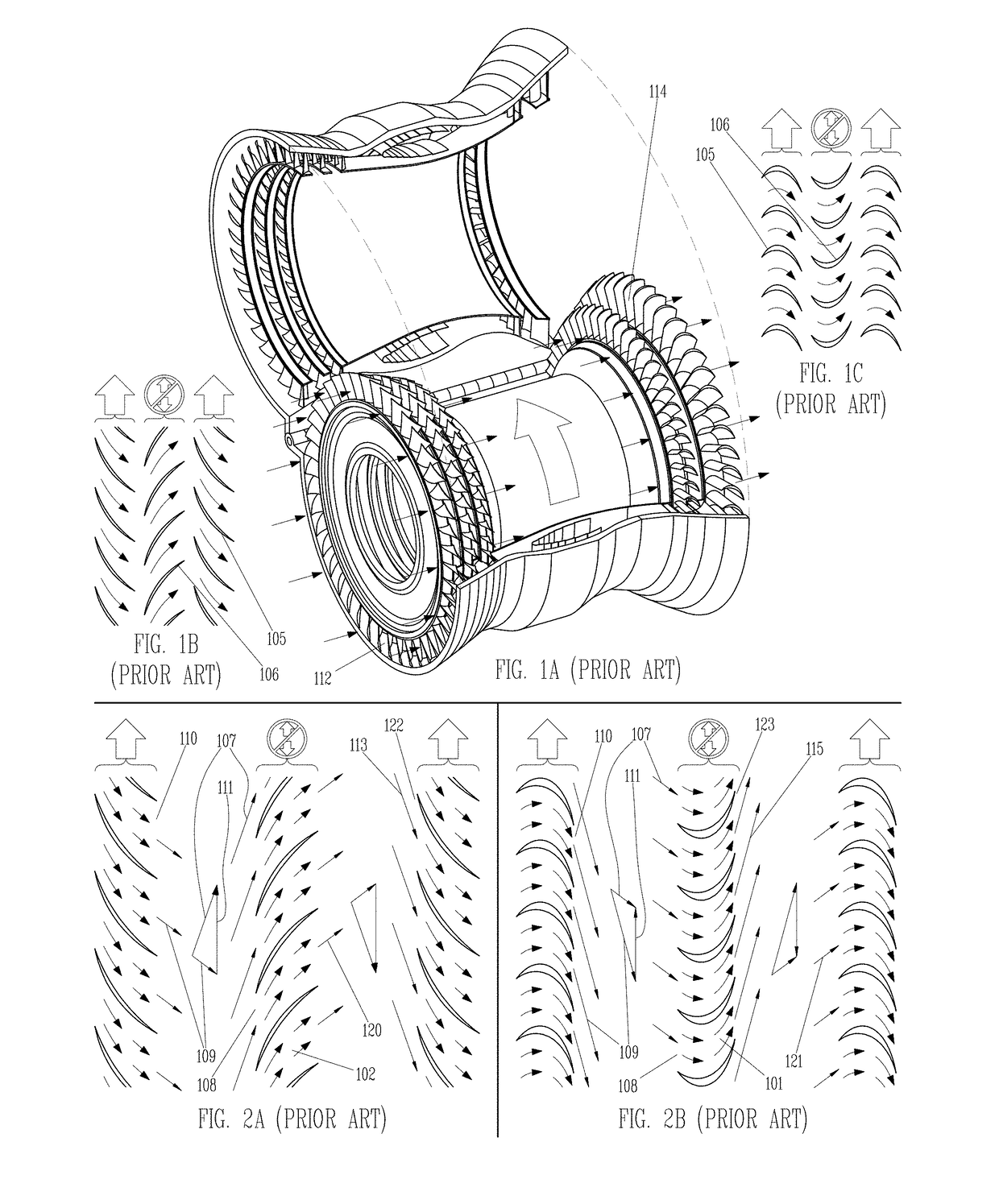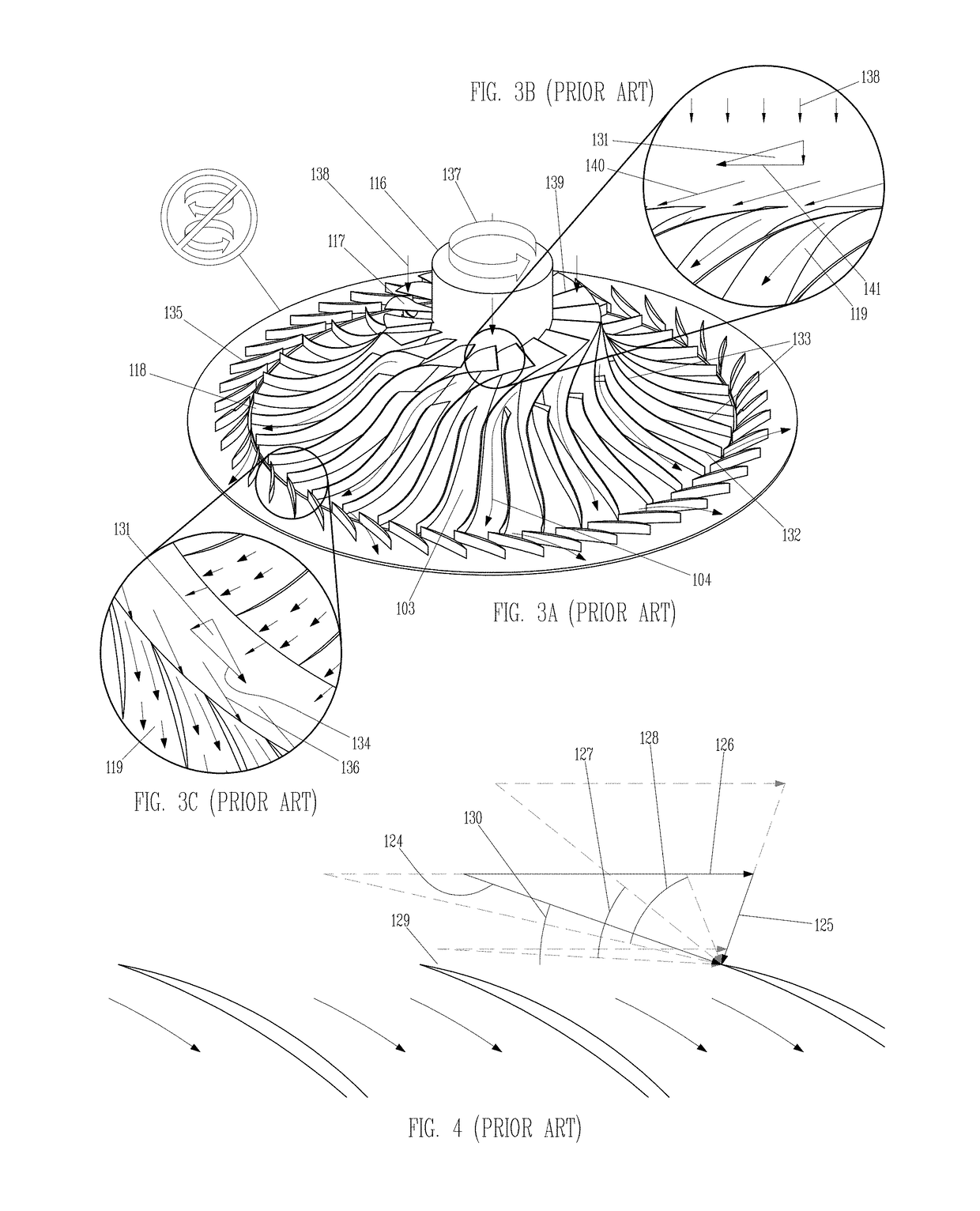Angular velocity stepping and methods of use in turbomachinery
a technology of angular velocity and turbomachine, which is applied in the direction of machines/engines, mechanical apparatus, liquid fuel engines, etc., can solve the problems of increasing energy loss, affecting the operation of the machine, so as to achieve the effect of reducing the number of cylinders
- Summary
- Abstract
- Description
- Claims
- Application Information
AI Technical Summary
Problems solved by technology
Method used
Image
Examples
Embodiment Construction
6.1) Features of the Basic Invention
6.1.1—Fundamental Elements
[0137]The present invention provides a turbomachinery architecture in which working fluid gains or loses pressure by flowing through a radial-flow impeller, then a radial-flow fluid vortex, then another impeller, another vortex, and so on. All impellers and fluid vortices rotate around a single axis and in a common direction. Each impeller rotates at a somewhat higher or lower speed than the impeller upstream of it. Each fluid vortex transitions fluid from the rotational speed of the upstream impeller to the higher or lower speed of the downstream impeller. The alternating sequence of impeller, vortex, impeller, etc. can transition working fluid to and from the high rotational speeds needed to produce substantial centripetal pressure change. This architecture offers significantly higher isentropic efficiencies and a dramatically expanded operational envelope, relative to existing technologies.
[0138]Within this specificati...
PUM
 Login to View More
Login to View More Abstract
Description
Claims
Application Information
 Login to View More
Login to View More - R&D
- Intellectual Property
- Life Sciences
- Materials
- Tech Scout
- Unparalleled Data Quality
- Higher Quality Content
- 60% Fewer Hallucinations
Browse by: Latest US Patents, China's latest patents, Technical Efficacy Thesaurus, Application Domain, Technology Topic, Popular Technical Reports.
© 2025 PatSnap. All rights reserved.Legal|Privacy policy|Modern Slavery Act Transparency Statement|Sitemap|About US| Contact US: help@patsnap.com



